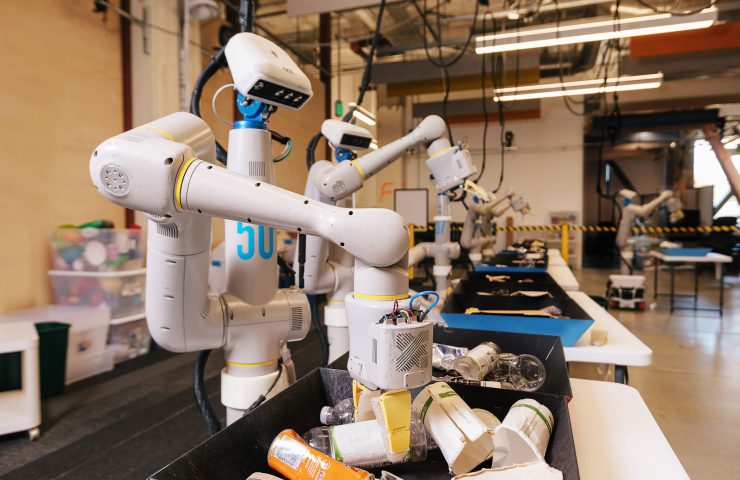this week, Google announced that taught robots to sort the trash in the office and to separate the recyclable waste from the compost. The breakthrough came thanks to the implementation of the project Google X Robot Everyday, open research initiatives aimed at the integration of robots into everyday life.
Over the last few months of office, Google has reduced the level of unsorted waste is four times.
Google has decided to trust robots to learn from their mistakes during sorting of garbage and this has become a breakthrough technology. Every day people watched the robots when they were sorting out the trash and noticed a right and wrong choice.
Every night with new data generated per day, are used to automatically generate thousands of new simulations that will run the artificial intelligence robot the next day, said message project.
Robots, the company on garbage sorting have a height of about five feet and move around the office on the Rovers are powered by batteries. The design of the Rover includes an open storage tray, where they can install a few things.
While the sort of rubbish may not seem like an important task, such as creating combat Autonomous complexes, Google engineers believe that it can test how effective robots can adapt to many small uncertainties embedded in human space.
"Everyday environment, such as our homes or offices, is not regulated by a set of simple rules, which may be followed by robots," writes Hans Peter Brondmo from Google X.
"Think about the people around you right now: they go and write a message, or stop suddenly to chat or go in the fridge.
Even the everyday objects, from chairs to coffee cups, appear, move and disappear as we anticipated and expected, but it's a big mystery for a robot.
where people naturally combine vision, understanding, navigation and actions to drive and achieve their goals, the robots usually need thorough instructions and coding to perform each of these tasks."
After an initial positive results Google believes that the debris could be just the tip of the iceberg.
In the future, the company plans to launch a study to create robots that can use the experience gained during the execution of one task, for example sorting garbage and apply it in a completely separate task.
Brondmo warns that any real applications consumer level is still far, and compares the current state of robotics with the mainframes in the 1960s and 1970-ies.




